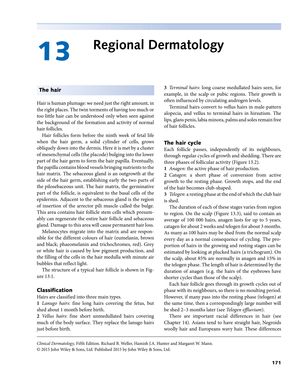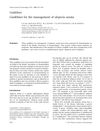Regional Dermatology: Hair and Nail Biology, Hair Loss Conditions, and Dermatological Issues of the Mouth and Genital Regions
November 2014

TLDR The document explains hair and nail biology, common hair loss conditions and treatments, oral and genital skin diseases, and the risks and treatments associated with squamous cell carcinoma.
The document from 2014 provides a comprehensive overview of hair and nail biology, various hair loss conditions, and dermatological issues affecting the mouth and genital regions. It explains that hair follicles undergo growth, regression, and rest cycles, and that common hair loss conditions include alopecia areata with a 2% lifetime risk, androgenetic alopecia influenced by androgens and genetics, and traction alopecia caused by certain hairstyles. Central centrifugal cicatricial alopecia (CCCA) is prevalent among black women and associated with hair styling practices. Treatments for hair loss range from corticosteroids to minoxidil and finasteride. The document also discusses nail conditions, their systemic disease implications, and the changes nails undergo with age. Oral diseases like lichen planus, candidiasis, and aphthae are covered, with lichen planus having a 1-5% risk of squamous cell carcinoma. Squamous cell carcinoma of the mouth and genital regions is highlighted for its aggressiveness and potential for metastasis, with treatments including Mohs micrographic surgery. HPV is noted as a risk factor for genital SCC, with the hope that vaccination will reduce its incidence.


